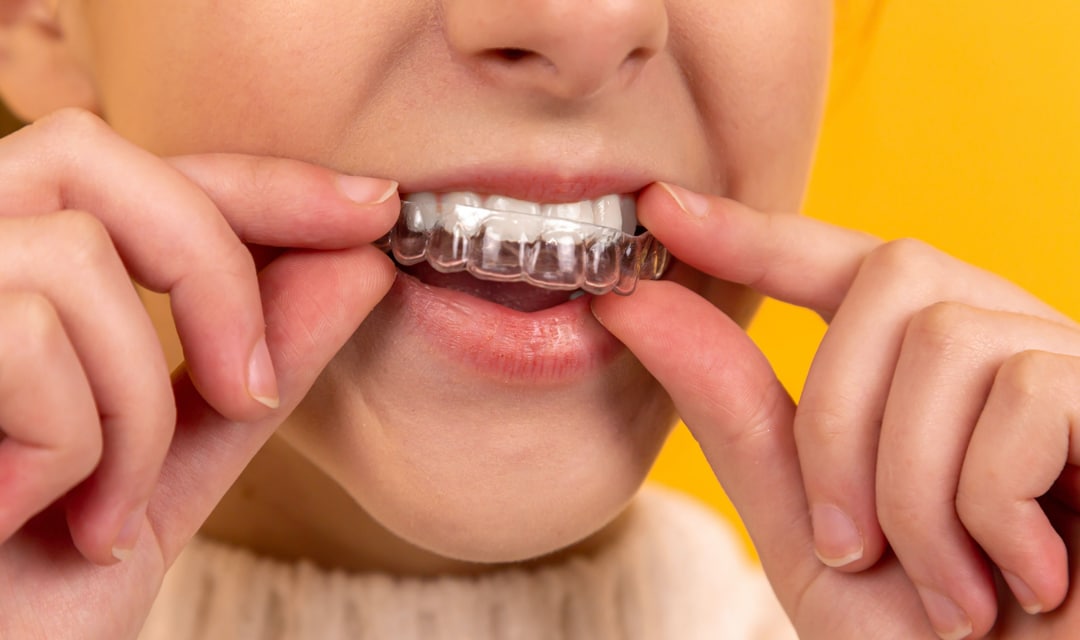Has your retainer started feeling too tight or uncomfortable? If your retainer doesn’t fit anymore, it can be frustrating and confusing.
You might wonder if you should force it in, ignore it, or toss it away. But what you do next matters a lot for your dental health and smile. Keep reading to discover simple, effective steps you can take right now to fix the problem and protect your teeth.
Don’t let a poorly fitting retainer ruin all the progress you’ve made!
Reasons Retainers Stop Fitting
Retainers may stop fitting properly for several reasons. This can cause discomfort and reduce their effectiveness. Understanding why retainers do not fit helps you take the right steps to fix the problem.
Teeth and mouth structures change over time. Retainers must fit well to keep your teeth in place. Let’s explore the main reasons why retainers stop fitting.
Natural Teeth Shifting
Teeth naturally move throughout life. Even slight movements can make retainers tight or loose. This happens because the bone and gums change shape slowly. Small shifts cause retainers to feel uncomfortable or not fit at all.
Retainer Wear And Tear
Retainers can wear out with daily use. Cracks, bends, or warping affect their shape. Old retainers lose the exact fit they once had. Damage from heat or pressure also changes how retainers fit your teeth.
Changes In Oral Structure
Oral changes affect retainer fit too. Growth, tooth loss, or dental work alter your mouth’s shape. Jaw alignment can shift from habits like teeth grinding. These changes mean your retainer might no longer match your mouth.

Credit: orthodonticassoc.com
Immediate Steps To Take
Retainers that no longer fit can cause discomfort and affect your teeth alignment. Taking quick action helps prevent further issues and keeps your teeth healthy. Follow these immediate steps to handle a retainer that does not fit anymore.
Check For Damage
Look closely at your retainer for cracks or bends. Damaged parts can change its shape and stop it from fitting. Small breaks or warps make the retainer uncomfortable or useless. Finding damage early helps your orthodontist fix or replace it faster.
Avoid Forcing The Retainer
Do not push or force the retainer into your mouth. Forcing can hurt your teeth and gums. It might also worsen the retainer’s shape. Use gentle care and stop if it feels tight or painful. Let your orthodontist adjust it safely.
Contact Your Orthodontist
Call your orthodontist as soon as possible. Explain that your retainer does not fit anymore. They will guide you on the next steps and may schedule a visit. Quick contact helps avoid teeth moving out of place again.
Quick Fixes At Home
Retainers that no longer fit can cause discomfort and affect your smile. Small fixes at home might help you wear your retainer more comfortably. These quick methods can ease tightness or pressure until you see your orthodontist.
Warm Water Adjustment
Soak your retainer in warm water for a few minutes. This softens the plastic, making it easier to adjust slightly. Gently bend the edges with your fingers to relieve tight spots. Avoid hot water that can warp the retainer. Check the fit often while adjusting.
Using Orthodontic Wax
Orthodontic wax helps cover sharp or irritating parts of your retainer. Apply small pieces to areas causing discomfort. This creates a smooth barrier between your retainer and gums. Replace the wax daily to keep your mouth comfortable. Wax is easy to use and safe for short-term relief.
Temporary Use Of Dental Tools
Use clean dental tools to carefully adjust your retainer at home. Small pliers or tweezers can help bend wires or plastic parts gently. Work slowly and make tiny changes to avoid damage. Only adjust minor areas that cause pain or tightness. Stop if you feel resistance or cracking sounds.
When To Seek Professional Help
Noticing your retainer does not fit well can be frustrating. It can cause discomfort and affect your teeth alignment. Knowing when to get professional help is important. A dentist or orthodontist can give the right advice and treatment.
Retainer Repair Options
Sometimes, retainers can be fixed instead of replaced. Small cracks or bends can be repaired by a professional. Trying to fix it at home may cause more damage. A dentist uses special tools to restore the retainer’s shape. Repairs can make the retainer comfortable to wear again.
Getting A New Retainer
When the retainer is too old or broken, a new one is best. Teeth may have shifted, making the old retainer unusable. A new retainer fits better and keeps teeth in place. Your dentist will take new impressions to make it. New retainers feel more comfortable and work better.
Adjustments And Recalibration
Sometimes, small adjustments can improve the fit of your retainer. A professional can reshape or tighten it carefully. This helps the retainer fit snugly without pain. Recalibration may also help if teeth have moved slightly. Regular check-ups ensure your retainer stays effective.
Preventing Fit Issues
Preventing retainer fit issues starts with good habits. A retainer that fits well keeps your teeth in place. Small care steps help avoid problems later. Follow these tips to keep your retainer working properly.
Proper Retainer Care
Clean your retainer every day. Use a soft toothbrush and mild soap. Avoid hot water that can bend the plastic. Store it in its case when not wearing it. This protects it from damage and dirt.
Regular Orthodontic Checkups
Visit your orthodontist as scheduled. They check how your retainer fits. Early signs of fit problems get noticed quickly. Adjustments can prevent discomfort and poor fit. Keep these appointments even if your retainer feels fine.
Avoiding Common Mistakes
Do not chew on your retainer. Avoid leaving it in hot places like cars. Do not wrap it in a napkin or tissue. These actions cause damage or loss. Follow instructions carefully to keep your retainer safe.

Credit: loudounorthodontics.com

Credit: www.reddit.com
Frequently Asked Questions
Why Does My Retainer Suddenly Not Fit Anymore?
Your teeth may have shifted due to inconsistent retainer use or natural movement. This causes the retainer to feel tight or loose. Regular check-ups help detect changes early, ensuring your retainer fits properly and maintains your smile alignment.
Can I Still Wear A Retainer That Doesn’t Fit?
Wearing a poorly fitting retainer can cause discomfort and damage. Stop using it and consult your orthodontist. They can adjust or replace the retainer to ensure it fits well and continues to protect your teeth alignment effectively.
How Do Orthodontists Fix A Retainer That Doesn’t Fit?
Orthodontists may reshape or remake your retainer based on teeth changes. They take new impressions or scans to ensure a custom fit. This process restores comfort and effectiveness in maintaining your dental alignment over time.
When Should I Replace My Retainer?
Replace your retainer if it’s cracked, warped, or no longer fits. Regular wear can cause damage or distortion, affecting performance. Consult your orthodontist for timely replacement to keep your teeth aligned and avoid costly orthodontic relapse.
Conclusion
A retainer that no longer fits can cause discomfort and harm. Act quickly to avoid teeth shifting or damage. Visit your orthodontist for a proper check and adjustment. Keep wearing your retainer as advised to protect your smile. Taking these steps helps maintain your teeth’s alignment and health.
Don’t ignore fit problems; small changes make a big difference. Your smile deserves care and attention every day.
